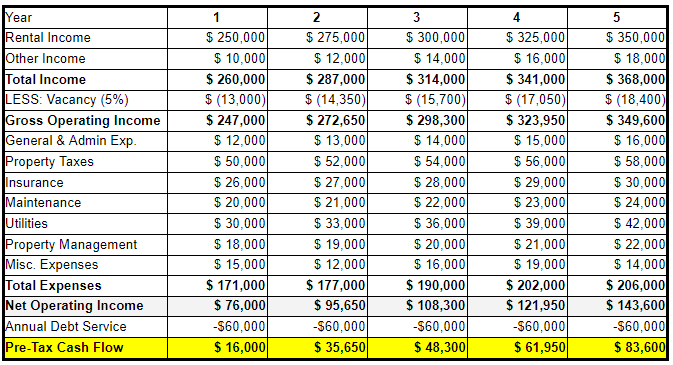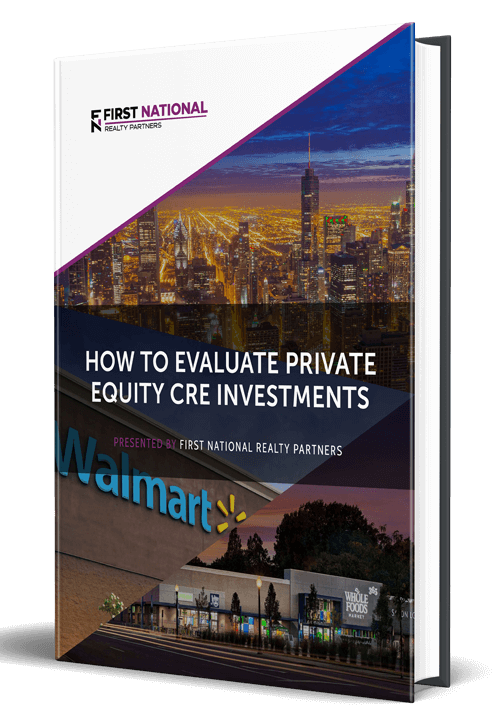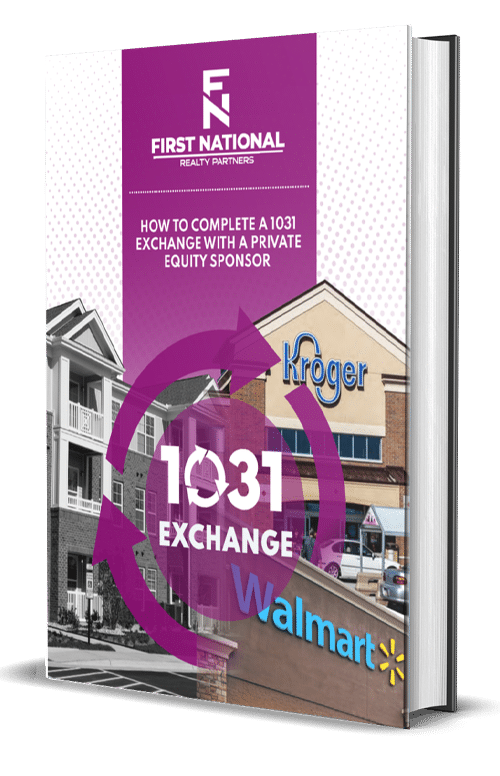When a Commercial Real Estate (CRE) investor is considering the purchase of an asset, one of their first underwriting activities is to create a proforma projection of the property’s cash flows. These cash flows are used to determine how much they are willing to pay for the property and what the potential return could be. This is a critical document and plays an important role in the ultimate investment decision, but it is inherently flawed.
A proforma is just a projection. And the further into the future it goes, the less accurate it is likely to be. For this reason, sophisticated investors use the proforma as a point of reference and then consider a range of possibilities for key variables to gain a better understanding of the transaction’s risk profile and the adequacy of their assumptions.
This process is known as “stress testing.”
What is Stress Testing?
Stress testing is the process of adjusting key proforma input variables to see how they affect the property’s cash flow. In each test, there is a “stressed variable” – the one that is adjusted – and a “result variable” which is the one that is impacted. Any variable can be stress tested, but there are two that are common in commercial real estate investments.
First, a commercial real estate proforma always includes a “vacancy” line item to account for units that aren’t earning income. On a stabilized basis, most proformas estimate a vacancy rate of 5% – 7%. But, what if there is an economic downturn that causes large scale job loss and a number of tenants that are unable to pay their rent? This may be reflected in the vacancy rate so it is smart to look at a range of vacancy rates (the stressed variable) to see how Net Operating Income (the result variable) is affected. What would happen if the vacancy rate jumped to 10% or even 20%? Would NOI still be enough to meet the property’s debt service coverage requirements?
Another common example of stress testing is to challenge a property’s proforma sale price. Often, the sale price is calculated by applying a cap rate to the property’s net operating income in the last year of the investment holding period. But, this often occurs 5 or 10 years into the future so the choice of a cap rate is often just an educated guess. So, an investor could stress test the cap rate to see how it affects the sale price and resulting investment returns over a range of values. Doing so will allow them to calculate exactly what sale price needs to be achieved to meet the investment’s return objectives.
To illustrate exactly how stress testing works, a case study is helpful.
Stress Testing Case Study
Suppose that an investor is considering the purchase of a small retail shopping center. They are planning to hold the property for five years before selling it. As part of their pre-purchase due diligence, they have created the following proforma:

In this example, assume that the stressed variable is property vacancy and the result variable is Net Operating Income. The goal of the stress test is to see how high vacancy can rise in year 1 before Net Operating Income is insufficient to cover the property’s debt service. To accomplish this, the necessary variables can be isolated and tested over a range of vacancy rates. The result of this test is shown in the table below:

The table uses the income and expenses from year 1 and keeps them constant. Then, a range of vacancy rates are studied to see how they affect Net Operating Income. Once debt service is backed out, pre-tax income is the result. As vacancy rates rise, pre-tax income falls and it can be seen that it turns negative at a vacancy rate of 11.16%.
So, the conclusion that can be drawn from this analysis is that, based on estimated income and expenses, vacancy rates can rise to 11.16% in year 1 before Net Operating Income is no longer able to cover debt service. At this point, the property owner and/or investors would have to fund operating deficits. If income does not grow or the vacancy rate/operating expenses do not shrink, they will have to continue to fund these deficits for the foreseeable future. Such a scenario would raise the risk profile of the transaction and place stress on investors. They want to receive cash from the property, not fund operating losses every year.
Why Stress Testing Matters
Again, the key point is that a proforma is just an estimate and the further into the future it goes, the less accurate it is. Thus, stress testing can be used to provide information such as:
- What vacancy rate causes the property to fall below breakeven on an operating basis. Vacancy rates can be driven by market conditions and the broader economy.
- What sales price allows an investor to hit their target returns
- How much loan interest rates could change before the property’s Net Operating Income is not sufficient to cover the debt service.
- What purchase price allows an investor to hit their target return metrics
- What vacancy percentage would cause a property’s loan-level debt service coverage ratio (DSCR) to drop below the covenants established by the lender.
There are other ways that stress testing can be useful, but the bigger point is this. Key assumptions and input variables should be tested across a range of values to gain a greater understanding of their potential impact on investment returns. Some software programs have this capability built in, but most investors use a spreadsheet program to stress test their proformas.
Other Stress Testing Applications
In this article, stress testing is discussed in a commercial real estate investment context. However, it is also used by financial regulators – like the Comptroller of the Currency or Federal Reserve – to test the capability of financial institutions to withstand a high number of borrower charge offs or credit losses in their real estate portfolio.
In such a stress test, the regulator may seek to determine the credit quality of a lender’s loan portfolio by running models across a broad range of macroeconomic scenarios. The result of the test will show impacts on collateral values for CRE loans or CRE portfolios and model loss rates to ensure the lender has enough liquidity to cover them. If the lender has sound risk management practices, they should be able to absorb a significant amount of loan losses before they run into trouble.
Interested In Learning More?
First National Realty Partners is one of the country’s leading private equity commercial real estate investment firms. We leverage our decades of expertise and our available liquidity to find world-class, multi-tenanted assets below intrinsic value. In doing so, we seek to create superior long-term, risk-adjusted returns for our investors while creating strong economic assets for the communities we invest in.
If you are an Accredited Investor and would like to learn more about our investment opportunities, contact us at (800) 605-4966 or info@fnrpusa.com for more information.






